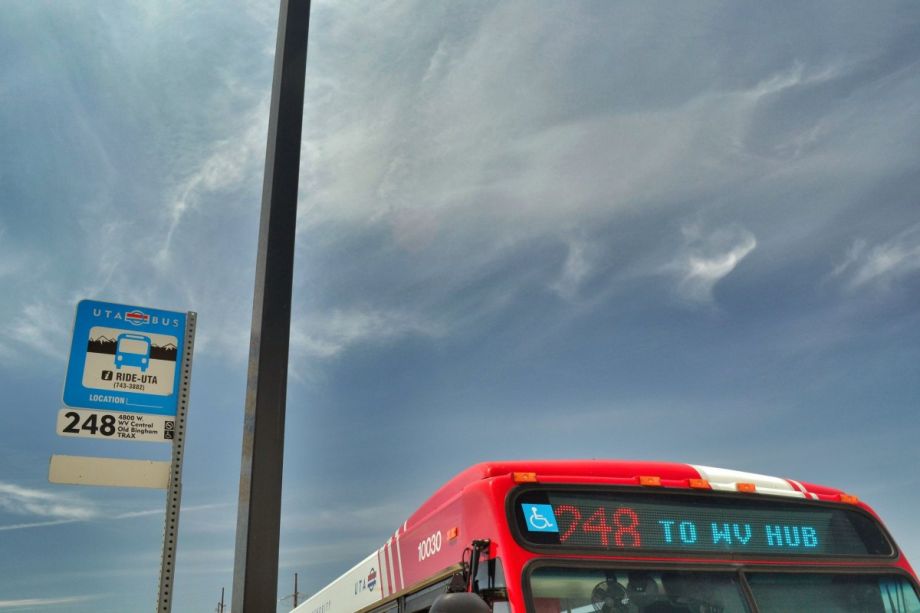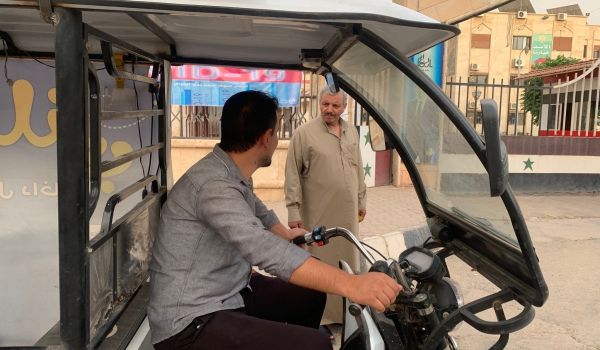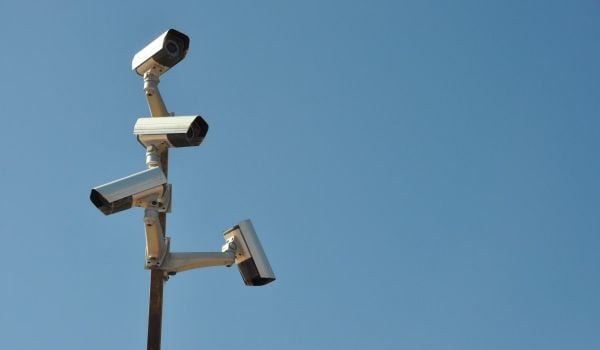From neighborhoods sliced through by highway construction to the most affordable neighborhoods often being located in industrial areas thanks to decades of segregation, marginalized groups across income, race, and employment suffer more from air pollution than white and wealthy populations.
While the deployment of electric buses can help mitigate the air quality impacts of public transportation, transit authorities often face budgeting constraints that center cost reduction rather than equity — until now.
University of Utah researcher and associate professor Xiaoyue Cathy Liu, in cooperation with the Utah Transit Authority (UTA), recently developed an open-source, web-based modeling tool that lets urban, city, and transportation planners and more across the country explore various scenarios for deploying electric buses. The tool models the trade-offs that cities can expect when making decisions around introducing electric buses into a municipality’s fleet or increasing their use—everything from how many buses and chargers to buy to what routes to run them on and tradeoffs between cost, air quality, equity, among other parameters.
A few years ago, UTA got a grant focused on no- and low-emissions projects that gave them enough money to purchase five battery-powered buses, an overhead charger, and a few depot chargers. “We started looking at the problem of how do you deploy an electric bus system if the buses aren’t going to be consistently in the same places,” explains Hal Johnson, project development manager for UTA, which operates circuit routes across a service area of more than 1,400 square miles. That includes Salt Lake City, where air quality concerns are always top of mind.
“We have horrible air quality issues,” Johnson says. “We’re in a mountain valley — it’s beautiful, but it traps poor air. We’re a politically conservative state, but people here are very interested in air quality issues because there’s a lot of quality of life and economic implications.”
In 2019, Liu began working with UTA to help them figure out how to best use the buses and chargers they got from the grant. “She developed a model to show run time, charge time, battery life—that we can do a systems deployment if we have a network of high-power chargers,” Johnson explains. “The initial questions were about getting the charging infrastructure in the right place to support the system.”
While UTA was naturally interested in minimizing cost to make the most out of their funding, Liu had a question of her own: How could the agency deploy its battery-electric buses so that the low-income populations who suffer the most from air pollution can benefit the most from electric bus replacements? “I just feel like when transit agencies deploy [electric buses], they don’t usually consider additional objectives,” she says. “Of course, cost is always the concern, but there are some additional goals other than cost, for example, environmental equity. We want to use [the UTA] example of when you have two competing goals, you want to consider how you could achieve them both through an optimal method.”
Liu used data from Purple Air, a company that produces air quality sensors and has air quality data from much of the world readily available on their website, to flesh out the equity parameters. With that information, UTA could simultaneously optimize for cost savings and equity.
“The lower [the] income you have around [bus] stops, the worse the air quality is, so a particular bus will have a higher environmental equity score if it’s traversing a highly dense service location,” Liu explains.
Liu’s model can be set to optimize for a variety of different factors, not just cost and equity — but the equity parameter has been a game-changer for UTA. “It’s been helpful to have a data point like that where we can be more thoughtful about how we deploy our system and buses,” Johnson says, adding that the tool was critical in helping UTA plan out where charging infrastructure would be placed and used. “It has given us a lot better information to make decisions with and provide more information to our board and others about why decisions are made, it’s helped provide good information to politicians.”
In June, Liu gave a webinar on her optimization model and her research with UTA for the National Institute of Transportation and Communities, a funder of the project. Around 200 people showed up. “Most of the attendants were from transit agencies and metropolitan planning organizations, so this seems to be a very interesting problem that agencies are trying to solve.”
The model is open-source, but because every transit agency’s data is different, it’s not as simple as plug-and-play. Liu is in the process of creating a step-by-step guidebook to show, in detail, how to collect the right data and how to run the model, which is all open source and online. “We’ll be developing an online visualization tool that uses the UTA network as an example,” she explains. “It will be open source as well. Any agency can use the code and input their data.”
UTA currently has three battery electric buses in service now, but with funds they’ve received through a settlement with Volkswagen, they’re planning to add 20 more battery buses and are working with a researcher at the University of Utah to put air-quality monitors on buses like they already have on light rail trains. “Right now, it’s providing more information and data on the kinds of problems we have,” Johnson says. “Based on what I’m seeing, we’ll be looking for more battery buses in the future.”

Cinnamon Janzer is a freelance journalist based in Minneapolis. Her work has appeared in National Geographic, U.S. News & World Report, Rewire.news, and more. She holds an MA in Social Design, with a specialization in intervention design, from the Maryland Institute College of Art and a BA in Cultural Anthropology and Fine Art from the University of Minnesota, Twin Cities.
Follow Cinnamon .(JavaScript must be enabled to view this email address)
















